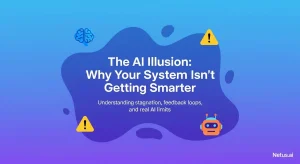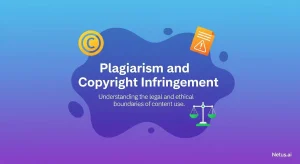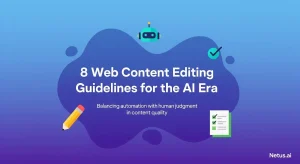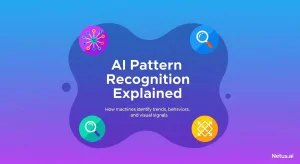Easy Ways to Get Rid of Hidden Text in Word: A Comprehensive Guide
Ashley Merit
Content writer and editor for Netus.AI
Table of Contents
Easy Ways to Get Rid of Hidden Text in Word. With the rise in plagiarism, educational institutions and teachers actively monitor students’ papers to ensure academic integrity. One method used by students attempting to bypass plagiarism checkers is the incorporation of hidden text within Microsoft Word documents. Identifying such hidden text can be challenging without the use of specialized tools like Copyleaks.
As a preventative measure, students are encouraged to utilize plagiarism checkers to scan their work and ensure originality before submission. Faculty and professors employ these same plagiarism detection tools to cross-verify the submitted documents, keeping students accountable for their work and maintaining high academic standards.
Key Takeaways
- Hidden text in Word documents may be used to evade plagiarism detection
- Copyleaks and other such tools help identify hidden text within documents
- Students and educators alike use plagiarism checkers to maintain academic integrity
What Is Hidden Text in Word
Word allows users to display or print documents without making certain text visible. This feature applies formatting marks to the chosen text, indicating it should not be displayed. When text has this formatting applied, it’s known as hidden text.
Hidden text can be particularly useful when printing a document without revealing specific information. To make the hidden text visible again, users need to select the Hidden Text option in the Open Dialog Box. The text will then appear marked with dotted lines for easy identification.
Although the primary intention of the hidden text feature was to temporarily hide confidential or sensitive information from view, some individuals misuse it as a method to disguise plagiarism. By adding “white” or invisible characters, a writer may attempt to avoid detection from plagiarism scanning tools.
However, hidden text is not a foolproof way to bypass these checks. In fact, there are other tactics that might be employed, such as altering words or using text blocks to confuse plagiarism checkers. While students may be aware of the repercussions of plagiarism, some still use their creativity to deceive both the tools and instructors.
In conclusion, hidden text serves a legitimate purpose in Word, but misuse of this feature can result in unethical practices. Users should always ensure they remain confident, knowledgeable, and abide by the guidelines when working with hidden text.
How Does One Hide Text in Word?
To conceal text in Word, one should first highlight the desired portion. Next, navigate to the Home tab and click the arrow at the bottom right of the Font group. This action opens the Font window where the Hidden option can be activated.
Once the Hidden attribute is selected, simply click OK to hide the text from view. Additionally, a keyboard shortcut—Ctrl+Shift+H—can be used to quickly hide content, further streamlining the process. Remember to check the Always show these formatting marks on the screen section in Word settings to control hidden text visibility.
Revealing Concealed Text in Word
Revealing hidden text in a Word document is as simple as hiding it. To make the hidden text visible, you must first enable the display of all formatting marks.
To display non-printing characters, go to the Home tab and select the “Show/Hide” option, or press Ctrl+Shift+8. This will show spaces, paragraph marks, and hidden text in the document.
Hidden text appears with a dotted line underneath. To reveal it, select the text or use the Ctrl+Shift+H shortcut. Alternatively, you can choose the “Font” option in the Ribbon, and deselect the “Hidden” setting to make the text visible again.
Keep in mind that when working with hidden text, the following may be helpful:
- Use the “Show/Hide” button on the Home tab or the Ctrl+Shift+8 shortcut to display formatting marks.
- Use Ctrl+Shift+H to toggle the hidden state of the selected text.
- In the Font settings, deselect the “Hidden” option to reveal the text.
- Remember that hidden text is visible only in Print Layout view, and it will not appear in the printed document.
Steps to Reverse the Hidden Text in Word
To reverse hidden text in a Word document, take these actions:
- Activate Show/Hide: This will help in locating the formatted, invisible text.
- Select hidden text: Use your cursor to highlight the now visible hidden text portion.
- Access text properties: Right-click on the selected text, and choose ‘Font’ from the context menu.
- Uncheck the ‘Hidden’ option: In the ‘Effects’ section, untick the ‘Hidden’ checkbox to unhide the text.
- Save your changes: Click ‘OK’ to finalize and save your changes, making the text visible again.
By following these steps, you can efficiently remove all hidden text and restore their visibility in the Word document.
Easy Ways to Check the Hidden Text Present in a Document
Students can sometimes exhibit creativity when attempting to cheat, incorporating techniques like formatting modifications and hidden characters. This makes manual checking of documents insufficient. Hidden text in documents can impact plagiarism checker results, as human eyes and basic checkers may not detect these obscured sections. Teachers need advanced tools to accurately identify hidden plagiarized content.
One such powerful tool is the Copyleaks plagiarism checker, which can rapidly check numerous pages and identify hidden text within documents. This software utilizes AI-powered technologies to spot manipulations and find hidden text that could potentially evade some plagiarism checkers. The system detects white characters and marks suspicious hidden characters with an error sign for easy identification.
Here are some steps to facilitate viewing hidden text within documents:
- Display Formatting Marks: To reveal hidden content, turn on the display for formatting marks in Word. This makes various marks and symbols visible, including hidden text.
- Inspect Document: Use Word’s “Inspect Document” feature located in the “Check for Issues” dropdown under the “Protect” group. This process can detect and remove hidden text, headers, and footers.
- Word Options: Visit the “Word Options dialog box” to adjust settings related to displaying hidden text in documents. Enable the option to show hidden text for better visibility.
- Find and Replace: Use Word’s “Find and Replace” function (Ctrl + H) with the “Hidden” check box selected under the “Font” format option. This method highlights all instances of hidden text.
- Printing: You can also configure Word to print hidden text, which may help in reviewing documents for inconsistencies. Adjust settings in the “Word Options” dialog box to enable printing of hidden content.
By using these methods and a powerful plagiarism checker like Copyleaks, teachers and professors can effectively reveal hidden text in documents and thwart attempts to pass off plagiarized content as original work.
Frequently Asked Questions
How to reveal and delete hidden text in Word documents?
- Press Ctrl + H to open the “Find and Replace” dialog box.
- Click “More” and select “Format” followed by “Font”.
- Tick the “Hidden” checkbox under “Effects” and press “OK”.
- Leaving the “Replace with” field blank, click “Replace All” to remove all hidden text.
What’s the fastest way to remove hidden text from a Word file on Mac?
On a Mac, follow these steps:
- Press Cmd + H to open the “Find and Replace” dialog box.
- Click “Advanced” and select “Font” from the “Format” dropdown menu.
- Check the “Hidden” box under “Effects” and click “OK”.
- Leave the “Replace with” field empty and select “Replace All”.
Are there keyboard shortcuts for removing hidden text in Word?
Using the “Find and Replace” dialog box by pressing Ctrl + H (Windows) or Cmd + H (Mac) is a quick method for removing hidden text. Follow the steps mentioned in the answers above.
Can you eliminate hidden text from Word documents before sharing them online?
Yes, use the “Inspect Document” feature in Word:
- Click “File” > “Info” > “Check for Issues” > “Inspect Document”.
- Make sure “Hidden Text” is checked in the “Document Inspector” dialog box.
- Click “Inspect” and then “Remove All” next to “Hidden Text”.
- Save the document without hidden text before sharing.
How to remove hidden text from a downloaded Word document?
Follow the same steps explained in the first question. Use “Find and Replace” to detect and delete all hidden text.
Is it feasible to locate and delete hidden text within images in Word files?
Hidden text in images cannot be directly removed from a Word document. You will need to edit the image using an image editing tool or software to remove any unwanted text from it. Then, re-insert the edited image into the Word document.

The shortcomings of content generated by AI | NetusAI
Discover why fast, high-volume AI content often fails to deliver real results. Learn about the crucial missing feedback loop and how implementing performance tracking can transform your AI content strategy.

The illusion of AI: Your system's intelligence gap | NetusAI
Stop wasting marketing spend! Most AI tools don’t learn from results, causing content stagnation and low engagement. Discover why your generative AI isn’t getting smarter and what system actually learns and optimizes content.

Plagiarism and copyright infringement | NetusAI
Learn the distinct differences between plagiarism and copyright infringement. Understand the ethical and legal implications and get practical strategies for avoiding both academic and creative work with NetusAI.

Tips and strategies for mobile content marketing | NetusAI
Optimized for mobile-first indexing, learn 5 essential strategies to capture attention, enhance engagement and drive leads and sales with your mobile content marketing.

Web content editing guidelines for the AI era | NetusAI
Review web content editing guidelines for the AI era. Learn how to edit AI-generated content, ensure authenticity and optimize for SEO and readability.

Explaining AI pattern recognition | NetusAI
AI pattern recognition enables machines to identify trends for diverse applications, from detecting plagiarism to fraud. Discover its processes, models and real-world benefits.
